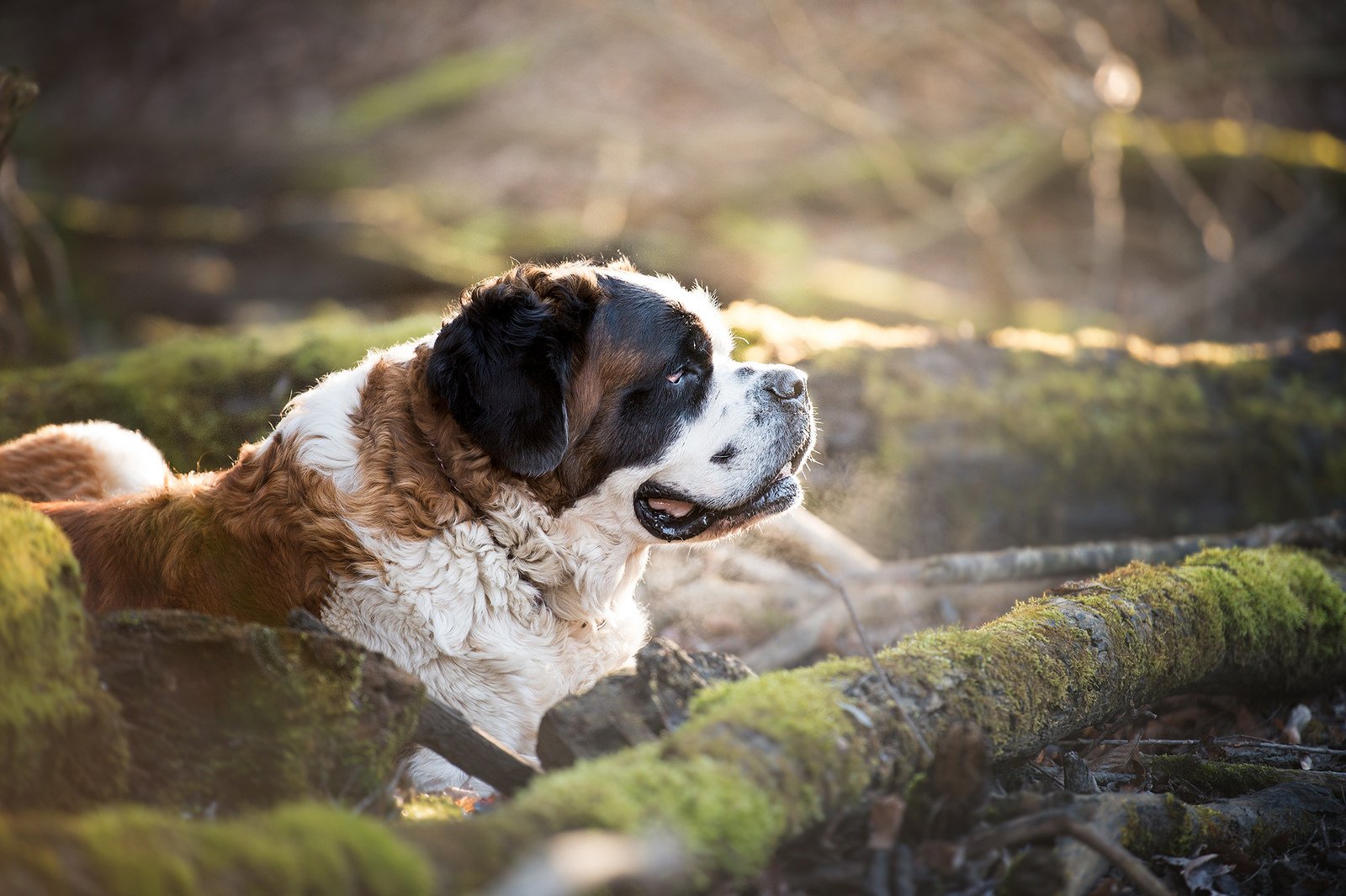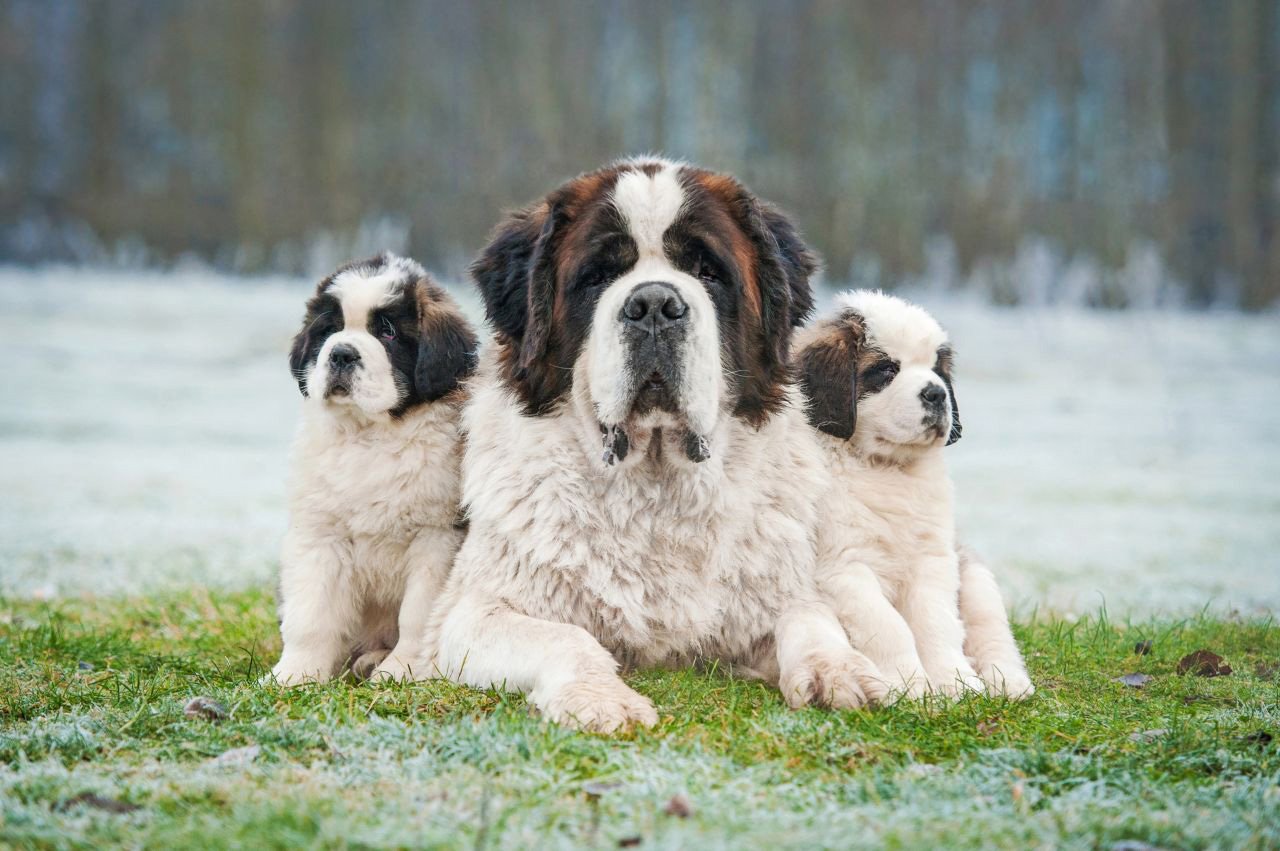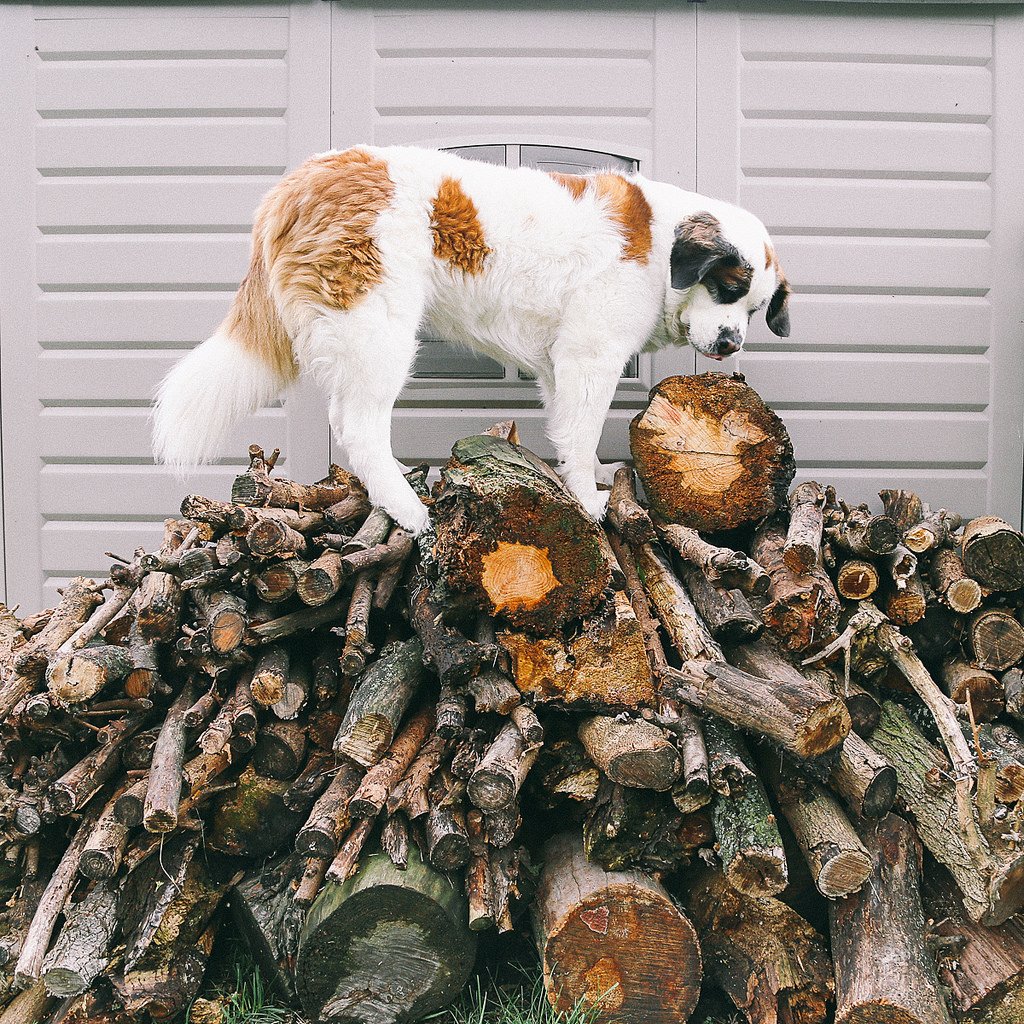St. Bernards are natives of the Swiss Alps, selfless rescuers of travelers lost in the mountains, known for their phenomenal devotion to man. Serious and collected, these white-red giants are completely devoid of arrogance and desire to “show off” in front of their relatives. And what’s the point of proving something to someone with such impressive dimensions. St. Bernards feel most comfortable in large friendly families, where they are definitely not threatened with loneliness and lack of communication.
#1 The history of the formation of the breed is rooted in such depths of centuries that experts can only speculate as to who actually was the ancestor of rescue dogs.

Most modern researchers are inclined to think that the ancestors of today's St. Bernards were the Tibetan mastiffs - dogs of massive build that settled in Central and Asia Minor in the 4th century BC. e. The animals came to Europe with the carts of Alexander the Great, who brought them as a trophy of war, first to Greece, and then to Ancient Rome. However, some scholars continue to consider the St. Bernards a "product" of mating Great Dane with Mastiff.
#2 As for the name of the breed, the animals owe them to the Catholic saint – Bernard of Menton, who founded a kind of shelter for travelers and pilgrims in the Swiss Alps.

The establishment was located on the Great Saint-Bernard Pass, known for its extreme weather conditions and steep descents. Due to the constant avalanches and crumbling mountain slopes, the trip to Bernard's shelter was a real game of survival. As a result, the monks of the local monastery often had to arm themselves with shovels and, instead of prayers and night vigils, go in search of tourists freezing under the snowdrifts.
#3 In the 17th century, the first St. Bernards began to be attracted to rescue operations, which were bred right at the monastery.

The animals had thick skins, withstood the cold, and had an excellent sense of smell, allowing them not only to smell a person under a snow block but also to predict the next avalanche. In addition, the dogs performed the function of a living heating pad: having dug up the victim, St. Bernard lay down next to him to warm him and help him to hold out until help arrived.
